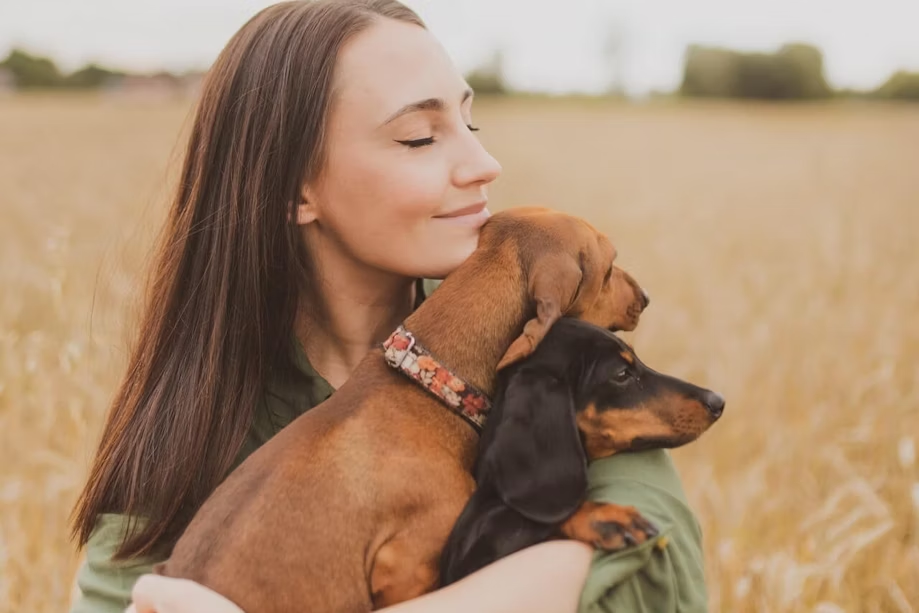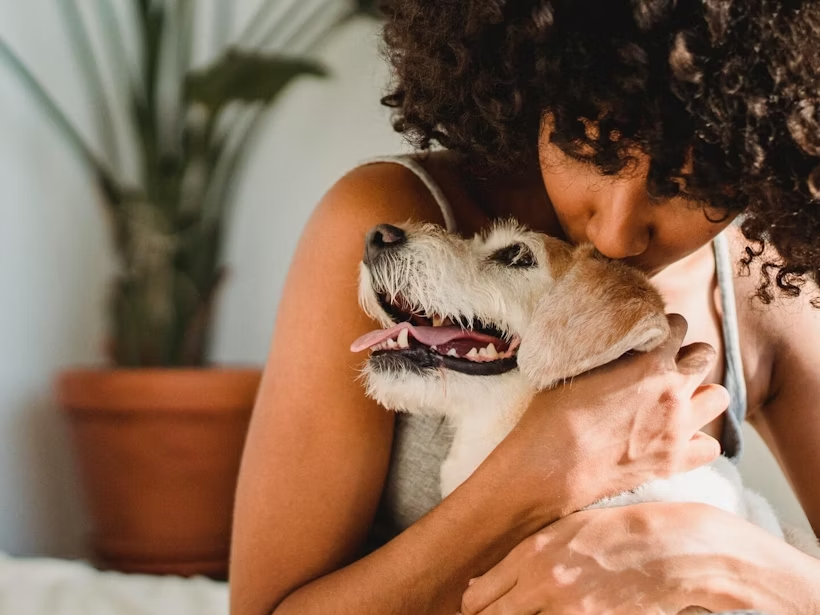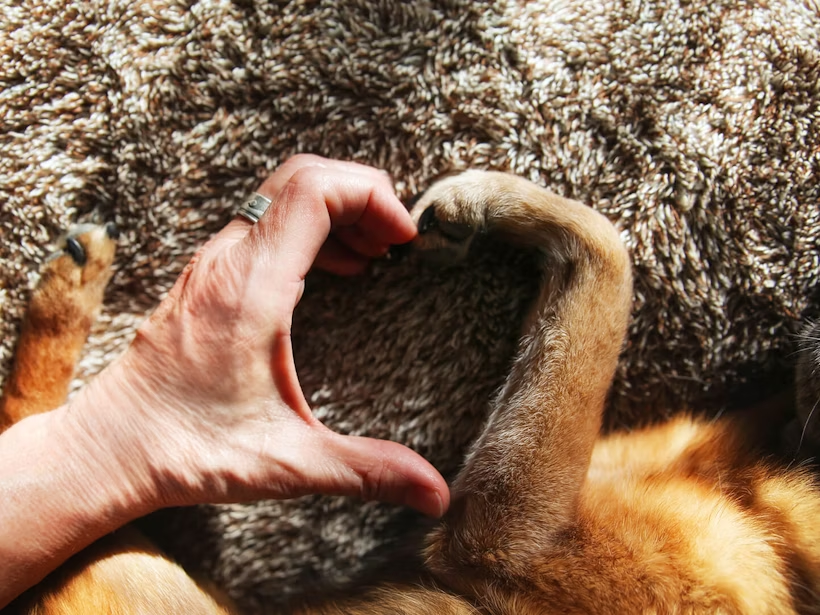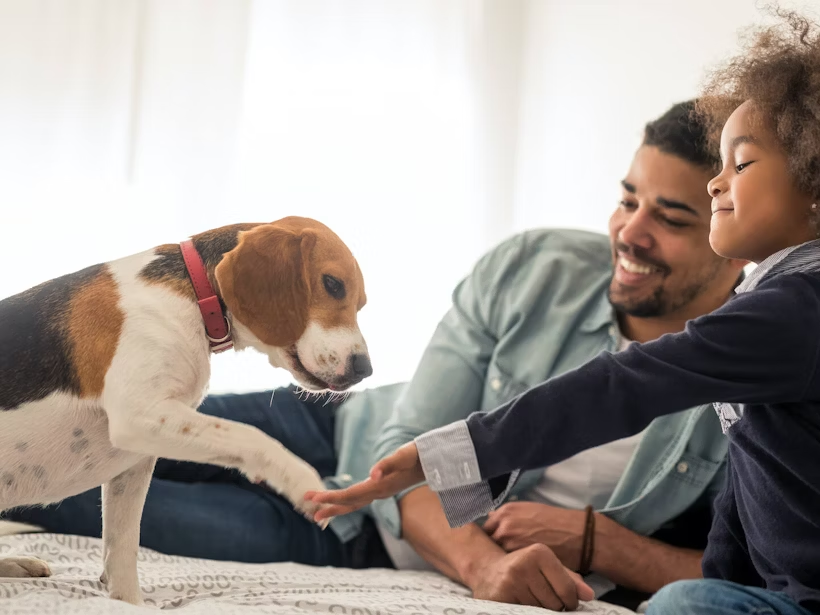Have you ever noticed feeling happier and more at ease around your pup? That’s not a coincidence. People with pets tend to experience a myriad of mental health benefits thanks to their furry companions.
So, it’s no surprise that dogs and other pets are increasingly serving as emotional support animals, or ESAs.
What is an emotional support animal?
Emotional support animals provide therapeutic benefits to people through companionship. A variety of animals have become ESAs, but dogs most frequently assume the role.
Research suggests ESAs can benefit people with mental health conditions—helping ease anxiety and generally elevate their human’s emotional and psychological states.
Did you know? Anxiety disorders are the most common type of mental health illness in the U.S., according to the Anxiety and Depression Association of America. One potential solution is emotional support animals.
What’s the difference between a service dog and an emotional support dog?
In the Americans with Disabilities Act, the U.S. Department of Justice defines ESAs as animals that comfort people by simply being with them. On the other hand, service dogs are trained to perform specific tasks to assist people with disabilities.
Another difference is that service dogs may travel alongside their people virtually everywhere, whereas ESAs are generally treated like normal pets. (That said, they do enjoy few special privileges—for instance, they may travel by plane with their humans and are exempt from no-pet housing policies.)

How to make your pup an emotional support dog
Many websites claim to offer ESA registration or certification in exchange for payment. But you can safely ignore them, as no officially recognized certification program exists. In fact, only a recommendation letter from a licensed mental health professional or primary care physician can designate an animal as an ESA.
To get such a letter, you must be diagnosed with an emotional or mental illness, such as general anxiety disorder or depression. But if you haven’t received such a diagnosis, remember that pets can still support your wellbeing without officially being ESAs.
Note: Flying with your dog or circumventing no-pet policies might sound great. But with the rise of fake emotional support animals, it’s important to seek an ESA letter only if you truly need one.

Which breeds make the best emotional support dogs?
Dogs have served as companions to humans for thousands of years. So, it’s safe to say that most pups have what it takes to become an ESA. That said, some breeds are naturally better suited for the task.
What makes a good emotional support dog? Besides being highly affectionate, they should be:
- Calm and gentle
- Smart and trainable
- Friendly and not fearful
That means especially independent and anti-snuggling dogs (e.g., Shiba Inu, Chow Chow) probably aren’t the best fit.
But here are several breeds that do make the cut.
- American Staffordshire Terrier: Loving toward their family members, Amstaffs make calm, fun-loving household companions.
- Beagle: Gentle, affectionate, and playful, the Beagle is a very happy breed by nature.
- Bernese Mountain Dog: Giant, gentle, and good-natured, Bernese Mountain Dogs form strong attachments to their people.
- Bichon Frise: Known for their gentle manners, cheerful spirits, and unbridled affection, Bichon Frises are among the most comforting lap dogs.
- Boxer: Boxers have assumed many roles throughout history. But first and foremost, they’re affectionate companions.
- Bulldogs: Docile, sweet, and friendly, Bulldogs are eager to please (and curl up in a lap).
- Cavalier King Charles Spaniel: Though lively and always ready to play, these pups are also happy to curl up on the couch with their favorite human.
- Collie: Originally bred to be working dogs, Collies have taken on the job of steadfast family companion.
- French Bulldog: Frenchies are people-oriented and crave close contact with their humans—whom they have a strong desire to please.
- Golden Retriever: As one of the most popular dog breeds in the world, Golden Retrievers are nothing if not calm and loving companions.
- Havanese: These smart, social dogs have relaxed attitudes and adaptable natures—and they’re downright adorable.
- Irish Wolfhound: Though massive, Irish Wolfhounds love to gently cuddle with their people 24/7.
- Labrador Retriever: Known for their happy-go-lucky personalities, Labs make the world a brighter place.
- Lhasa Apso: Smart and sensitive, Lhasas prefer to always be at the side of their humans.
- Pomeranian: This entertaining breed is cheerful, friendly, and eager to lift the spirits of anyone close by.
- Poodle: Because of their sensitive nature, Poodles can often pick up on the moods of people they’re close to.
- Pug: Even-tempered, outgoing, loving, affectionate, calm, and playful—there’s so much to love about the Pug.
- Yorkshire Terrier: Craving human contact, the Yorkie is a calming companion you can carry around with you.
And let’s not forget rescue mixes! They’re a great option because they often express their gratitude for being adopted through unrelenting devotion.
Wondering if your dog could be an ESA?
Find out if they have any promising breeds in their bloodline with a Wisdom Panel™ DNA test.
Learn More



